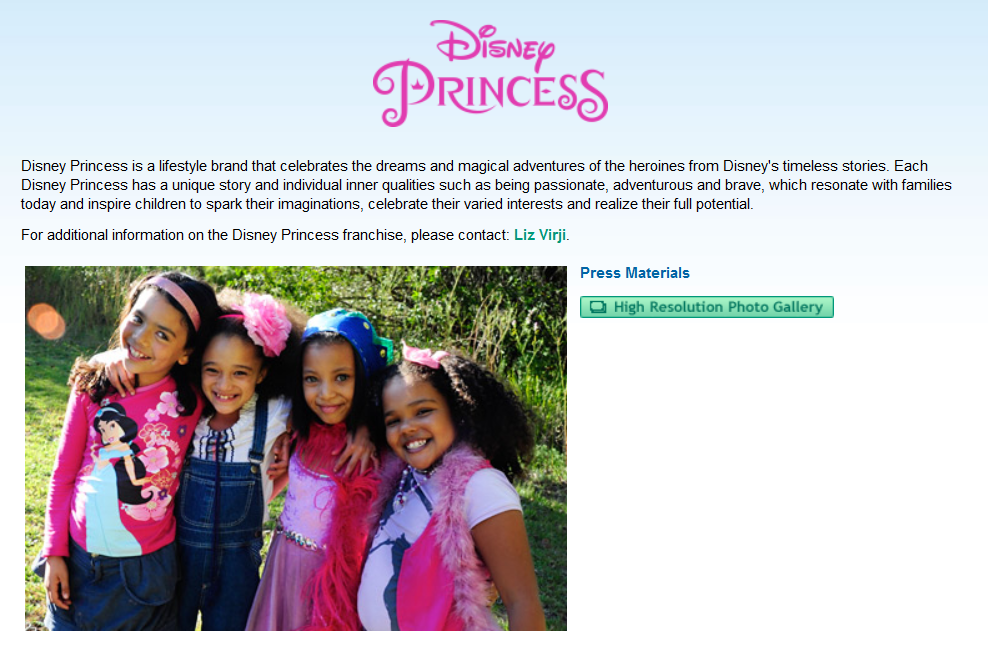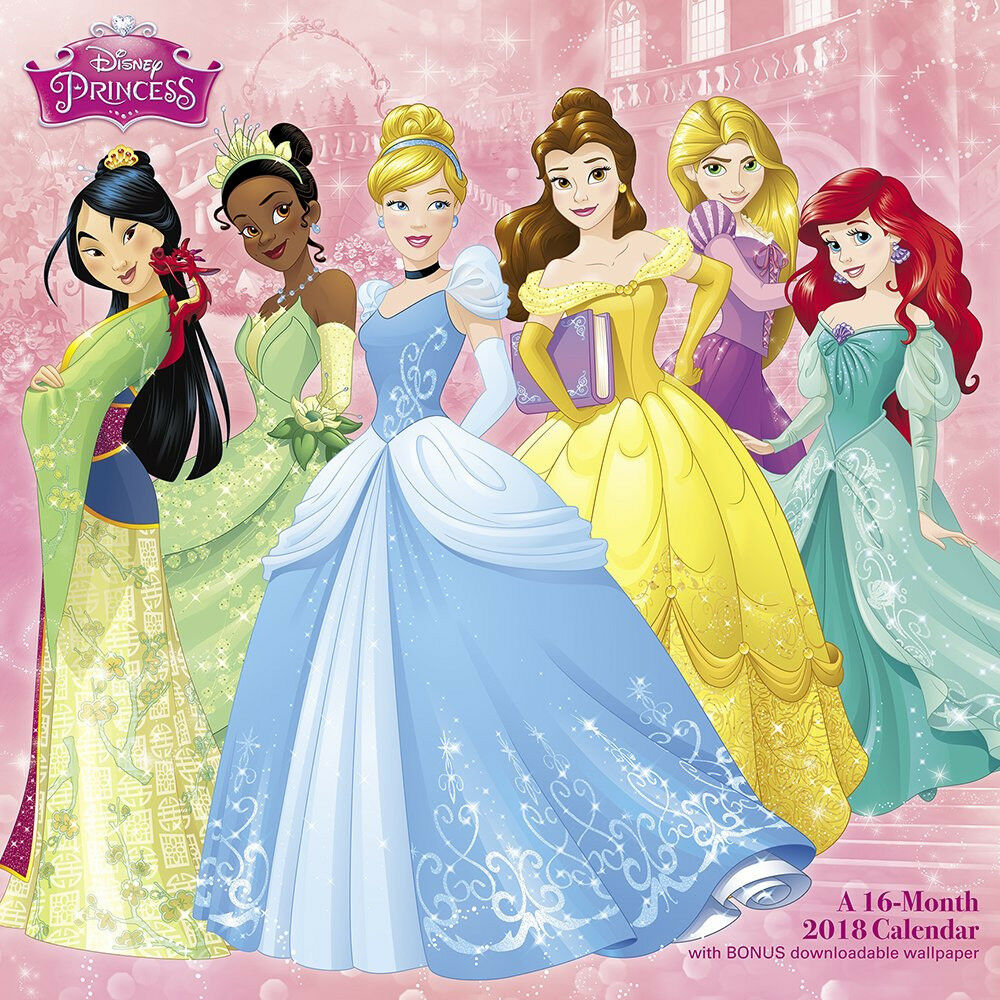Thanks to its legacy of animated fairy tale films, Disney will always have princesses. But will it always have the Disney Princess franchise? In an attempt to come to grips with her feelings about the astonishingly lucrative line of merchandise, journalist and feminist critic Peggy Orenstein published an op-ed in the New York Times in 2006. ‘Why are you so mad, Mama?’ Orenstein’s daughter asked her. ‘What’s wrong with princesses?’ (Orenstein 2006). In the op-ed Orenstein tries to answer her daughter, spending the rest of the article dissecting the current craze for princesses and uncovering exactly how the franchise (and, by her estimation, princess culture) started. In the article, Orenstein worries whether this love for princesses is good for her daughter: ‘Maybe Princess is the first salvo in what will become a lifelong struggle over her body image, a Hundred Years’ War of dieting, plucking, painting and perpetual dissatisfaction with the results’ (Orenstein 2006). Orenstein was not the only person to raise this issue. Concerned parents, feminists and childcare experts all weighed on the ‘princess problem’ with articles, think-pieces, and even an academic conference. In 2014, Rebecca C. Hains wrote The Princess Problem, a guide to help parents navigate the treacherous princess culture waters. It seems that Orenstein, Hains and their peers may not have to worry much longer.

In 2015, Disney made a massive change to the Disney Princess franchise, a decision that was mostly profit-driven: Disney felt doll-maker Mattel was neglecting the franchise in order to prop up Barbie’s declining sales (Suddath 2015). Still, Disney’s resulting choice to move the franchise to Hasbro, Mattel’s more play-oriented rival, was, in part, a response to Orenstein and her fellow critics. Around 2015, Disney unveiled a new slogan for the Disney Princess franchise, ‘Dream Big, Little Princess’ (Disney Consumer Products 2015).

This shifted the franchise’s overall focus from physical beauty, adornment and heterosexual love (as evinced in the Harrod’s 2014 sign ‘Sparkle on Little Princess’ [see Figure 2]) to encouraging young consumers’ sense of adventure and curiosity. In 2018, a new redesign was released, one that significantly decreased the amount of glitter adorning the princesses and their gowns and even realigned their facial features to be a closer reflection of their appearance in their films (e.g., see Figure 3). Belle is the best example of this. A 2012/2013 redesign slightly altered her face to be prettier, coyer, almost sexier (Orenstein brings this up twice in her own blog). Her 2018 redesign brings her back to her film look, including her hair, facial structure, and makeup.

an example of the 2018 Disney Princess redesign, featuring significantly less glitter.
But is this enough? Maybe not.
Again, it is worth emphasizing that the Disney Princess franchise is still incredibly successful and profitable. Disney has not pulled it from the shelves. Any evidence that the franchise is in decline is scattered and anecdotal at best. Yet Disney does not seem to be developing or investing in the franchise, either. A 2018 article for The Wall Street Journal notes Disney employees who work within the ‘princess operations’ are engaged in ‘a perennial push-and-pull over getting the mix of tradition and modernity right, from producing remakes and merchandise built around longtime [sic] characters to introducing new characters’ (Schwartzel 2018), trying to strike a balance between answering the franchise’s critics and retaining the more traditional core that made the franchise so successful in the first place.[1] The WSJ article indicates that Disney is struggling to keep the franchise fresh, that turning a profit with the princesses is no longer as simple as choosing a Pantone color and putting the princess images together on a dress or jewelry kit. To wit: I started collecting Disney Princess magazines back in 2013. It was easy to pick one up at my local Sainsbury’s or Tesco while doing my weekly shop. Recently, I noticed that they were gone from the shelves. Employees told me that they had been discontinued some time ago. The only place I can find the magazines now is in the much larger Tesco in the center of town. Of course, the franchise’s absence in two local stores is hardly worth a pause.
Still, I also noticed that the Disney Princess page on the Disney Consumer Products website is gone – in fact, the Disney Princess website, once replete with mini-games, princess bios, and suggestions for at-home activities is little more than two or three webpages selling merchandise. Moana, whose film was released in 2017, has her merchandise listed with other Disney Princess products but has yet to have an official coronation in the parks – something that Rapunzel, Tiana, and Merida all received when they were brought into the franchise.
It is also worth pointing out that, despite Frozen’s box office success in 2013, the film’s princesses, Anna and Elsa, were not inducted into the Princess franchise. Instead, Disney made the film a franchise in and of itself, with magazines, toys, homewares, animated shorts with their own merchandise, a Broadway production, and a much-anticipated sequel. In fact, it is entirely possible that the Frozen franchise is replacing the Disney Princess franchise. Where Disney Princess merchandise has been scaled back, Frozen seems to be holding on as strong as ever. Such a move would make sense: where the Disney Princess franchise has been criticized for encouraging passivity and an unhealthy focus on physical appearance and being a good wife, Anna and Elsa encourage the opposite. Both are pro-active throughout the film. Anna takes it upon herself to plunge into an eternal winter to save her sister and her kingdom, while Elsa becomes the queen of Arendelle, negotiating trade deals with her neighbors and caring for her citizens. Also, whereas previous princesses’ films feature conventionally beautiful or perfect heroines, Anna is a messy, clumsy goofball who enjoys eating and Elsa openly struggles to control her powers. Finally, and perhaps most importantly, Anna and Elsa redefine ‘true love’ within Disney’s animated universe. While other princess films focus on heterosexual romantic love, in Frozen it is sisterly love that saves the day.
Still, this cannot be construed as a true indication of the Disney Princess franchise’s end. That will not come until Disney itself either announces it is pulling princess merchandise from the shelves or quietly removes all signs it was ever there in the first place. I want to conclude by turning to readers: What do you think? Can you still get the Disney Princess magazine in your local shop? Do you or your friends or family still buy Disney Princess merchandise for your daughter(s)? Do your daughter(s) still ask for Disney Princess merchandise? If not, who, if anyone, has replaced them? Anna? Elsa? Moana? Or someone completely different? I’m looking forward to hearing your thoughts.
References
Disney Consumer Products (2017). Disney Consumer Products Homepage. Accessed online: https://www.disneyconsumerproducts.com/Home/display.jsp?contentId=dcp_home_pressroom_presskits_press_kit_us_disney_princess. Site now defunct. [Accessed 13/12/2015]
Hains, R.C. (2014). The Princess Problem: The Princess Problem: Guiding Our Girls through the Princess-Obsessed Years. Naperville, IL: Sourcebooks.
Maier, K (2016). ‘The Evolution of the Disney Princess Franchise: Catching Up and Moving Forward’. [online] animationstudies 2.0. Available at: https://blog.animationstudies.org/?p=1381 [Accessed 06/10/2019].
Orenstein, P. (2006). ‘What’s Wrong with Cinderella?’. [online] nytimes.com. Available at: http://www.nytimes.com/2006/12/24/magazine/24princess.t.html [Accessed 06/10/2019].
Orenstein, P. (2012). ‘Disney Princesses Circa 2012: I’m Too Sexy for My Gown?’. [online] peggyorenstein.com. Available at: https://www.peggyorenstein.com/blog/belle-the-bratz-version [Accessed: 06/10/2019].
Orenstein, P. (2013). ‘Seriously, Disney, I’m Trying to Take A Little Break Here – MUST YOU?. [online] peggyorenstein.com. Available at: https://www.peggyorenstein.com/blog/seriously-disney-im-trying-to-take-a-little-break-here-must-you [Accessed 06/10/2019]
Schwartzel, E. (2018). ‘Beauty and the Backlash: Disney’s Modern Princess Problem’. [online] WSJ.com. Available at: https://www.wsj.com/articles/beauty-and-the-backlash-disneys-modern-princess-problem-1542430801 [Accessed 06/10/2019].
Suddath, C. (2015). ‘The $500 Million Battle Over Disney’s Princesses’. [online] Bloomberg.com. Available at: http://www.bloomberg.com/features/2015-disney-princess-hasbro/ [Accessed 06/10/2019].
Mx. Kodi Maier is currently working on their thesis on the Disney Princess franchise at the University of Hull. Their most recent article, ‘Kids At Heart?: Exploring the Material Cultures of Adult Fans of All-Ages Animated Shows’ was published in June 2019 in The Journal of Popular Television. Other publications include ‘Princess Brides and Dream Weddings: Investigating the Gendered Narrative of Disney’s Fairy Tale Wedding’ in the book Discussing Disney and ‘Camping Outside the Magic Kingdom’s Gates: The Power of Femslash in the Disney Fandom’ in Networking Knowledge: Journal of the MeCCSA Postgraduate Network.
[1] The princesses’ appearance in Wreck-It Ralph: Ralph Breaks the Internet (2018) exemplifies this precarious balance. They all ask fellow princess and Ralph’s best friend, Vanellope, if she has ever been kidnapped, bewitched, enslaved, or needlessly ‘rescued’ by a man. It is a winking nod to the audience; Disney’s way of ironically acknowledging the criticisms leveled at the Disney princesses. It is also, perhaps, another way in which Disney is distancing itself from the Disney Princess franchise.

Nice blog very informative
Thanks for sharing with us
Remembering this series makes me very nostalgic and above all, I can clearly see that all the characters have undergone their own character arc.